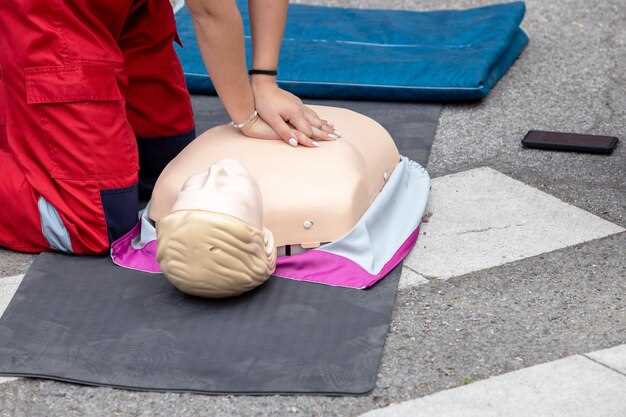
In the dynamic environments of both road and air travel, the ability to react quickly and effectively in emergencies is crucial for safety. Drivers and pilots alike must be prepared for unpredictable situations that require immediate and decisive action. This preparedness often hinges on the practice of emergency maneuvers that can make the difference between a safe outcome and a catastrophic one.
For drivers, mastering techniques such as quick braking and swerving can significantly mitigate the risks posed by obstacles or other vehicles on the road. These skills are not just instinctual; they require deliberate practice to ensure that reactions become second nature during high-stress situations. Similarly, pilots must perform routine drills that simulate emergency scenarios, such as engine failure or severe weather conditions, allowing them to maintain control and navigate effectively in adverse circumstances.
Ultimately, both disciplines share a common goal: to enhance the safety of all who travel. Through rigorous training and scenario-based practices, drivers and pilots can cultivate the skill sets necessary to handle emergencies with confidence. This article delves deeper into the importance of these maneuvers and provides insights into effective training techniques for both drivers and pilots.
Understanding Quick Stop Techniques for Safe Vehicle Handling
Quick stop techniques are essential for all drivers to master, as they can help prevent accidents in critical situations. The goal is to efficiently bring the vehicle to a complete stop while maintaining control, even when swerving is necessary. Below are key elements to understand and practice.
Key Elements of Quick Stop Techniques
- Awareness: Always be vigilant of your surroundings. Anticipating potential hazards can help you react quickly.
- Proper Foot Position: Keep your right foot hovering over the brake pedal while your left foot is ready to assist if needed.
- Controlled Braking: Apply pressure to the brake pedal gradually rather than slamming it to avoid locking up the wheels.
Swerving Technique
In emergency scenarios, swerving can be an effective way to avoid collision. However, it must be executed correctly to prevent loss of control.
- Identify an Escape Route: Look for a clear area to steer towards, such as a lane or a shoulder.
- Check Mirrors: Ensure that the path is clear of other vehicles before making a swerve.
- Steering Input: Use smooth and deliberate steering motions to guide your vehicle without jerking the wheel.
Practice Makes Perfect

- Conduct drills in a safe environment such as a closed course.
- Practice quick stops using cones or other markers to simulate sudden obstacles.
- Incorporate swerving exercises to enhance vehicle handling and reaction times.
Remember, the effectiveness of these techniques relies on regular practice and staying aware of your driving environment. Mastering quick stop techniques will ultimately lead to safer driving experiences and increased confidence on the road.
Executing Controlled Swerving to Avoid Obstacles in Flight and on the Road
Controlled swerving is an essential maneuver for both drivers and pilots, enabling them to navigate around unexpected obstacles while maintaining vehicle stability. This technique requires precise coordination and quick decision-making to ensure safety during critical moments.
On the road, executing a controlled swerve involves assessing the available space and determining the optimal angle to avoid the obstacle. Drivers must react swiftly, utilizing their peripheral vision to gauge the dimensions of the vehicle and surrounding traffic. When swerving, it is crucial to maintain a firm grip on the steering wheel and avoid sudden movements that could lead to loss of control. Practicing quick stops after the maneuver helps drivers regain composure and ensure they are ready for subsequent actions.
In aviation, the principles of controlled swerving apply similarly but involve altitude and directional adjustments. Pilots must quickly identify unmanageable threats, such as turbulence or other aircraft, and execute a controlled bank to change trajectory. This maneuver should be performed while monitoring airspeed and maintaining situational awareness. The capacity to make quick stops in altitude changes can mean the difference between maintaining a safe flight path and risking a collision.
Both drivers and pilots must train regularly to perfect their swerving techniques, focusing on the subtle aspects of control and coordination. Developing these skills through simulations and real-world practice scenarios builds confidence and preparedness for unexpected situations. The ability to perform controlled swerving effectively can enhance safety and contribute to successful navigation in diverse environments.
Training Scenarios for Realistic Practice of Emergency Maneuvers

Effective training scenarios are essential for developing the skills necessary to handle emergency situations in both driving and flying. These scenarios must emulate real-life conditions as closely as possible, enabling pilots and drivers to respond quickly and effectively. The following training scenarios are designed to provide practical experience in managing emergencies.
One critical scenario involves simulating sudden stops. For drivers, this could include practicing emergency braking techniques when an obstacle unexpectedly appears on the road. This exercise helps to cultivate quick reflexes and instills the importance of maintaining a safe following distance. For pilots, a similar exercise could involve simulating an engine failure during takeoff, requiring a prompt response to execute a controlled landing.
Another scenario involves quick decision-making under pressure. For drivers, creating a mock environment where multiple distractions occur, such as pedestrians crossing or vehicles merging unexpectedly, can test their ability to react swiftly. In contrast, pilots might practice emergency landings in varying conditions, encouraging them to assess weather factors and passenger safety while maintaining control of the aircraft.
Incorporating simulated adverse weather conditions can further enhance training. In driving, trainees can navigate through slushy roads or heavy rain to experience how stops may be affected. Pilots can practice approaches during turbulence, requiring them to make quick adjustments to maintain stability and safety. These experiences teach the importance of adaptability in emergencies.
Lastly, teamwork scenarios are invaluable. Drivers can practice coordinating with others during multi-vehicle emergencies, while pilots can engage in cross-training with ground crew for crisis management. Streamlined communication is vital during emergencies, making these exercises critical for real-world applications.
By implementing these training scenarios, both drivers and pilots can foster the quick thinking and decisive action required during emergencies, ultimately enhancing safety in all transportation domains.
